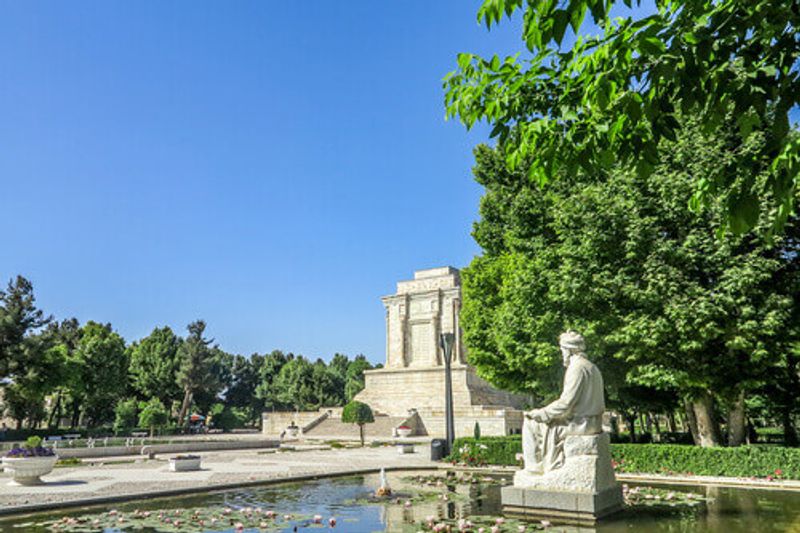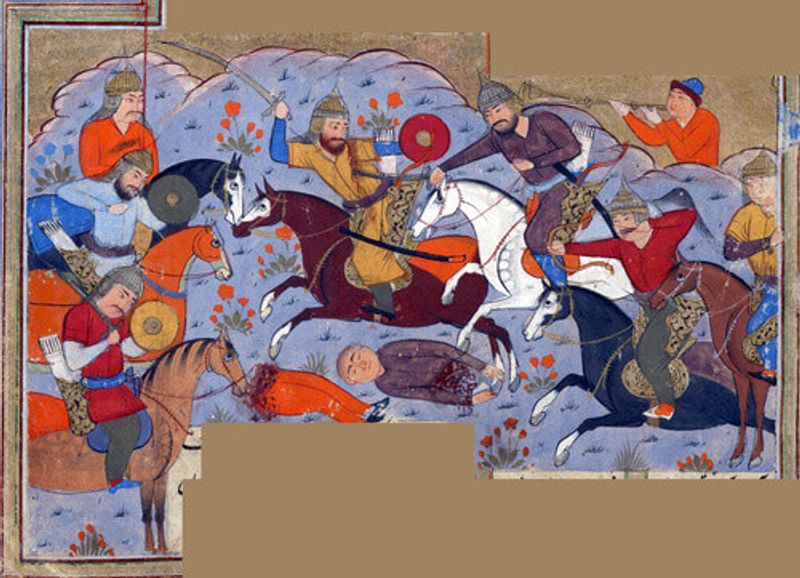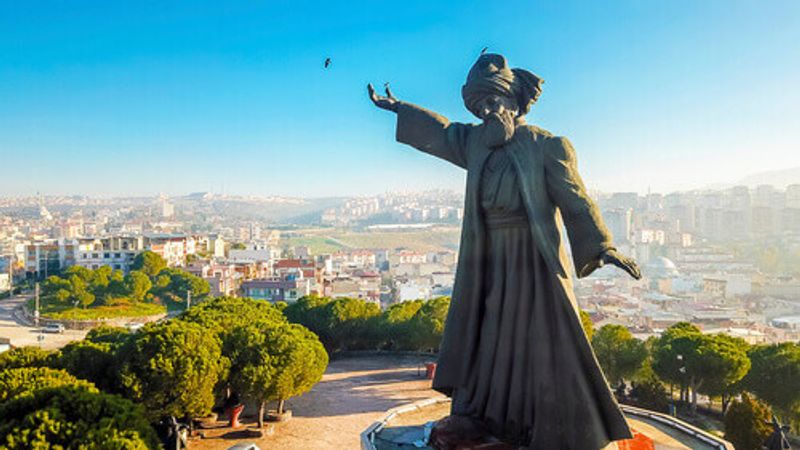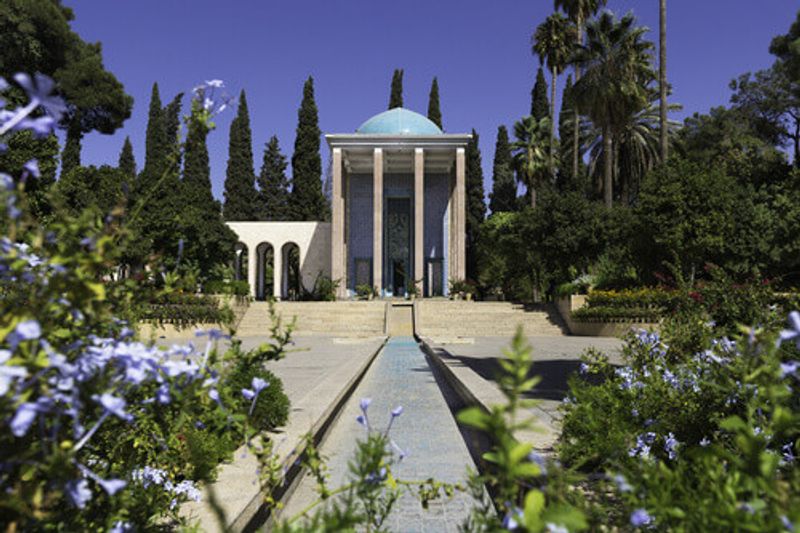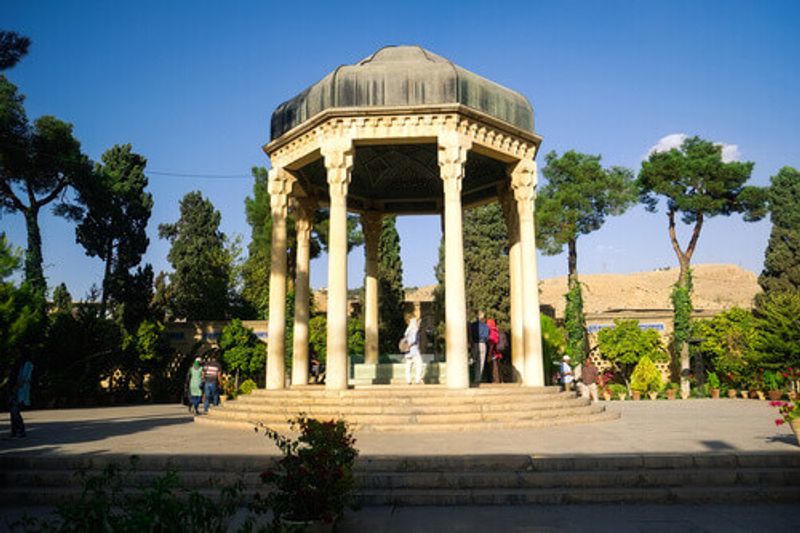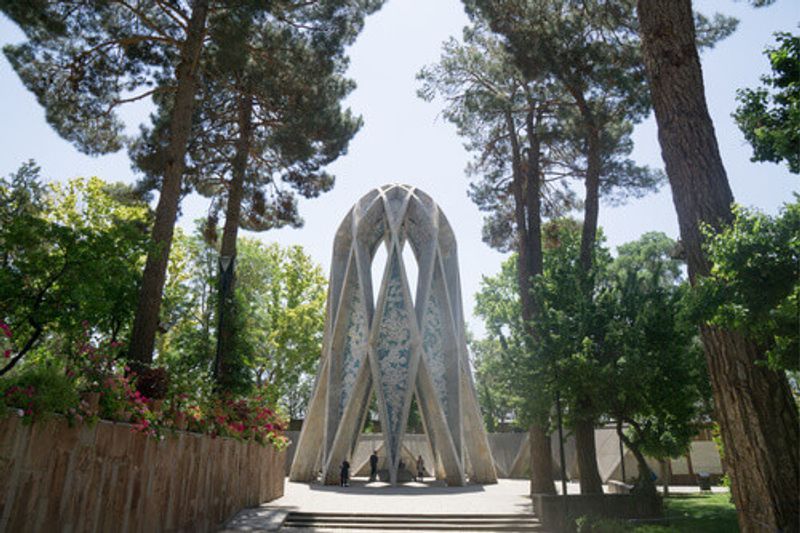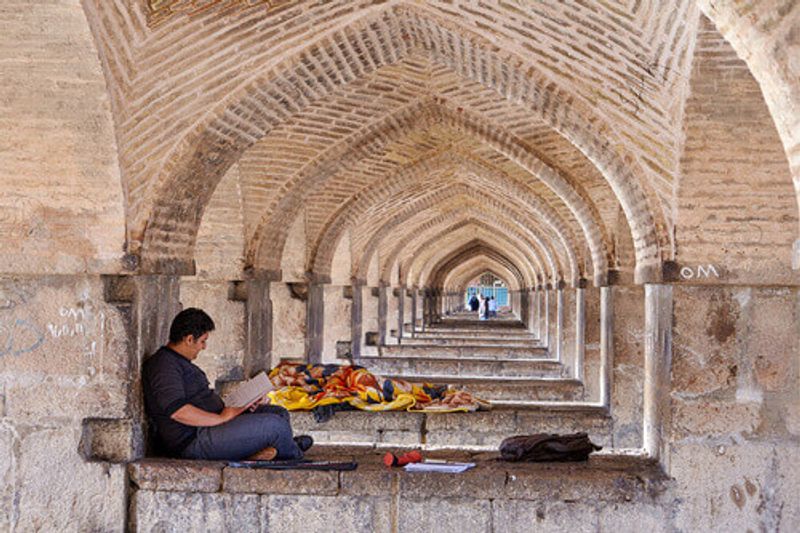From epics heroics to erotic love poems, Persian Poetry has inspired poets from around the world for centuries and it is as alive today as it was a thousand years ago
The earliest form of Persian poetry dates back 2,500 years to the Achaemenian Empire. Sadly, most of the literature from that period was destroyed in the sacking of Persepolis in 330 BCE but the Persian language remains to this day as the language of literature and culture throughout the Middle East.
The medieval period between the 10th and 16th century was the golden era of Persian poetry with the poem Shahnameh ‘Book of Kings’ being the first epic poem of the time. Shahnameh was written by the poet Firdowsi and is made up of an incredible 50,000 rhyming couplets.
Rulers of the time “commissioned poets to recreate magnificent scenes of hunting and banqueting; romances, heroes and epic battles,” explains Persian poetry scholar, Narguess Farzad. “And so in the 10th and 11th centuries these heroic epics emerge – the most magnificent of these is the Shahnameh.”
“Firdowsi produced this extraordinary epic in rhyming verse that took him 30 years to compose. He was commissioned by one dynasty and by the time he completed another dynasty was in power,” says Farzad, who is the chair of the centre for Iranian Studies at London’s School of Oriental and African Studies.
Praising of the kings
Similar to how European nobles would become patrons of painters, medieval Persian Kings or Sultans would pay poets to tell stories of their victories and “because of this patronage of monarchs and the elites, poetry really blossomed and thrived.”
“Some Sultans would have had hundreds of poets at their court. Smaller elites of the land would try to emulate this and they would have one or two poets among their retinue. They are paid to celebrate the most mundane things – if the king’s favourite horse has won a race or his sixth son was born or a harvest of grapes has been particularly good – any excuse, poets have to produce this celebration of achievement for the monarch or whoever is paying for them to do this,” says Farzad.
“Some would have been given a proper stipend – lodgings and an equivalent of a salary – but most were freelancers who were paid handsomely per line of poetry.”
The system was less elitist than one might think, and anyone could try their hand at becoming a poet. “A young poet would go to court with their work and there would be regular audiences where they would recite their poem publicly and it would be assessed. A goatherd could be a poet because reciting poetry, even to this day in Iran, has nothing to do with literacy – you memorise poetry because they are recited publically.”
Narrative poetry and the poetry of love
“Many poets were paid to celebrate their kings but every century there appears a handful of poets who rise above this. They write different types of poetry and these are long, mystical narrative poets who find a different way of worshipping the divine,” says Farzad.
Rumi was one of these. Originally from the Afghan-Tajikistan border he travelled extensively through the Persian Empire before settling in the Byzantine capital Iconium, modern day Konya in Turkey, where he became one of the most recognised and sought after poets of his time. Rumi was famous as a mystic, and like many poets, was regarded as a prophet, this made him very much in demand from kings from all over the empire and other poets would make the pilgrimage to come and see him.
“Rumi started with these short lyrical odes – like Shakespeare did – but his most famous works are his long narrative work. He knew that if they were just philosophical and dry they would be hard for the uneducated to understand and so he made his poems full of exciting stories.”
Rumi produced six volumes of long narrative works, each about 5,000 couplets long, which “are musical when you recite them and they are full of stories.”
Following in Rumi’s footsteps were Nizami Ganjavi from the Caucasus and Sa’di of Shiraz who died in 1291. “Sa’di wrote a poetic prose book called Gulistan, The Rose Garden, which after the Koran, is the second most read book in the Muslim world. Sa’di also wrote four ghazals – books of lyrical love poems.
“They were superstars. They might not have been known not to any old farmer but they were known by the elite and the rulers of the adjoining empires. The Ottomans would want to nab the Persian poets and the Mongols often did,” says Farzad.
Although they may have been devout practising Muslims the poems of this period have a very personate way of interpreting the Koran or prophets, which is through love.
“For them the religion of Islam becomes the religion of love and interpreting Islam through the metaphor of love. Love for the define that at its most tangible, is a carnal love, a profane love, love as you would worship a living gorgeous beloved. It is so erotic sometimes.”
Rise of Islam
As Islam took over Persia in the 16th-century poetry made way for architecture. Islamic rulers preferred the building of palaces and mosques to the commissioning of poetry. And poets fled to the Mughul court of India or the Ottoman court of Turkey, where their erotic poetry was more acceptable. But the epics poetry of the medieval period was survived by the roaming nomadic dervishes who would travel from one mystic shrine to another reciting these poems that were often as much as 60,000 couples long. They “would spread them throughout the land so even goatherds would be exposed to it.” While the language “of administration and scientific writing turned to Arabic, the language of poetic discourse remained Persian.”
Going global
By the 19th century poets from Europe discovered Persian poetry. The German poet, Goethe, was heavily inspired by the 14th-century poet Hafiz’ work, and the British poet Edward Fitzgerald’s 1859 translation of Rubaiyat by the 11th-century Persian poet Omar Khayyam made it the most widely translated poem in the world.
A period of exchange ensued where European discovered the Persian classics and modern Persian poets discovered that they didn’t need to be shackled by rhyme. “This led to “wonderful modernist poetry, every bit as good as medieval poetry,” says Farzad.
In the 20th century, “the modern poets stand up to their full height, look the medieval poets in the face and say: ‘I’m sorry, I am going to write about my mortal beloved. You can carry on writing about the immortal beloved, I want to focus on human love, profane love’.”
And it was this period that led to the modernist poets such as Forough Farrokhzad, Akhavan and Sepehri.
Modern poetry
The 1979 Revolution meant that pre-revolutionary poets were banned and the worship of the divine and martyrs was in courage instead. But that didn’t put an end to an appreciation of poetry.
“In modern Iran, Persian is the mother tongue of not more than 40% of Iranians. The official language is Persian, the language of education and instruction is Persian, and you’re not worth the title Iranian if you can’t recite poetry. It is the backbone of Persian culture and a protector of the language. Everyone from child to old will be able to recite poetry and will be absolutely chuffed if asked to recite a Sa’di or a Hafez or a Rumi poem.”
